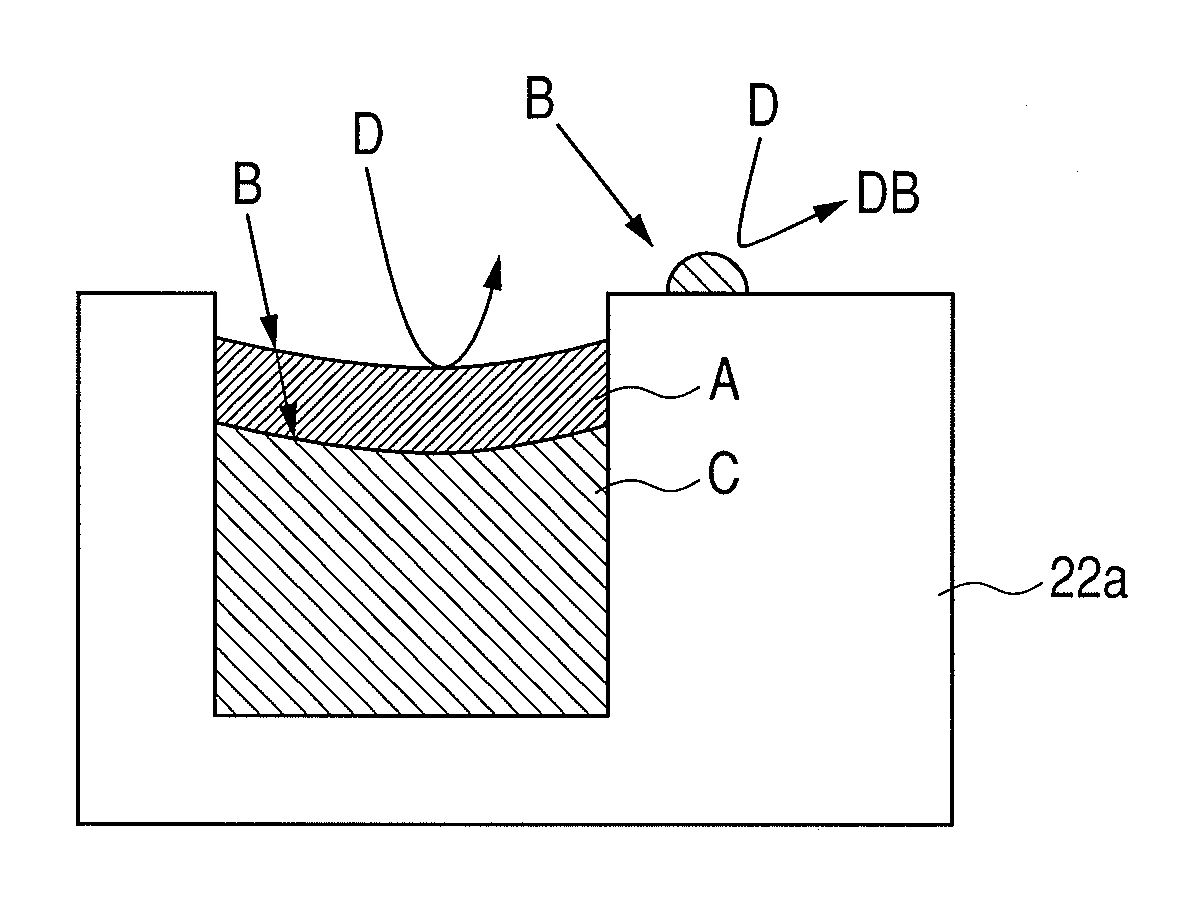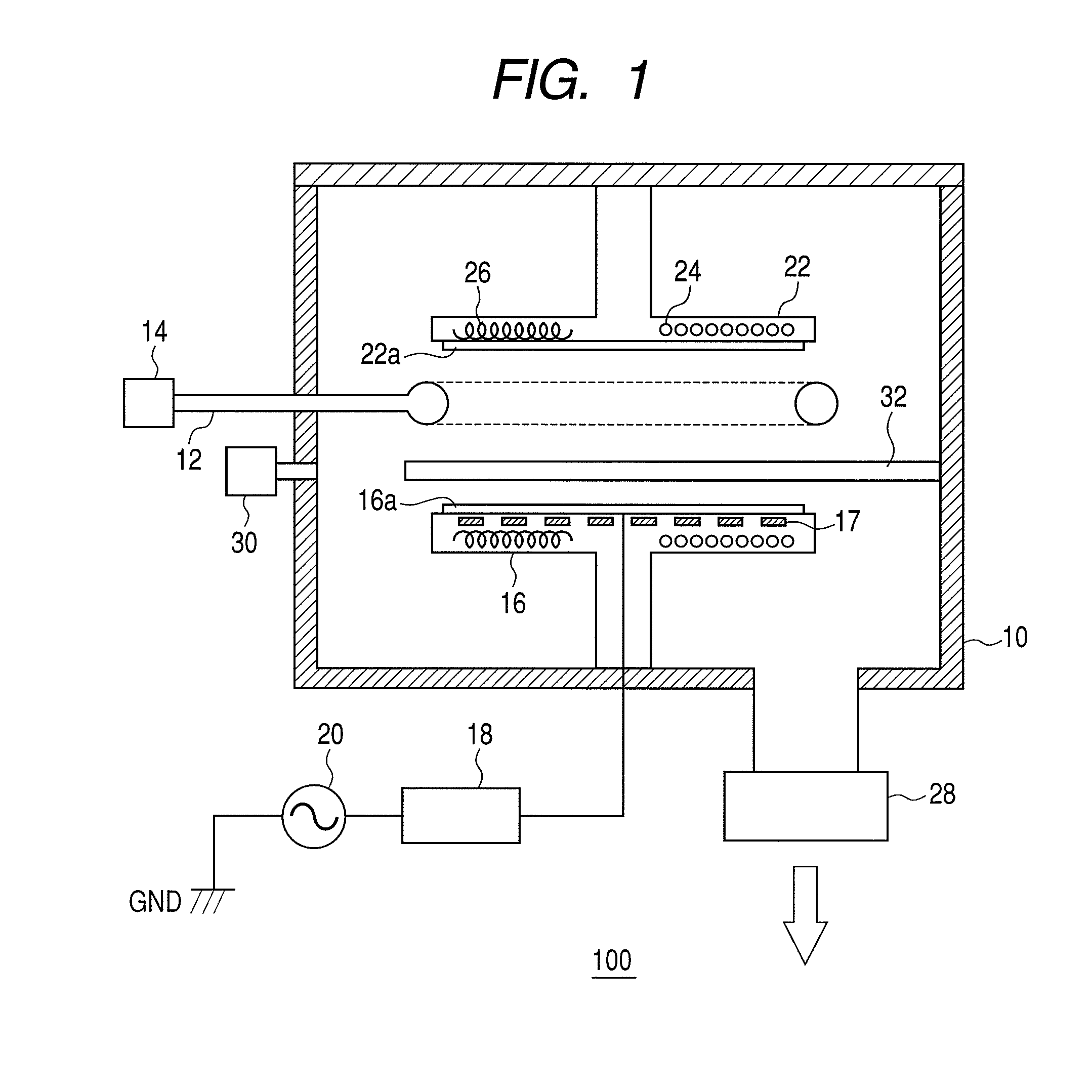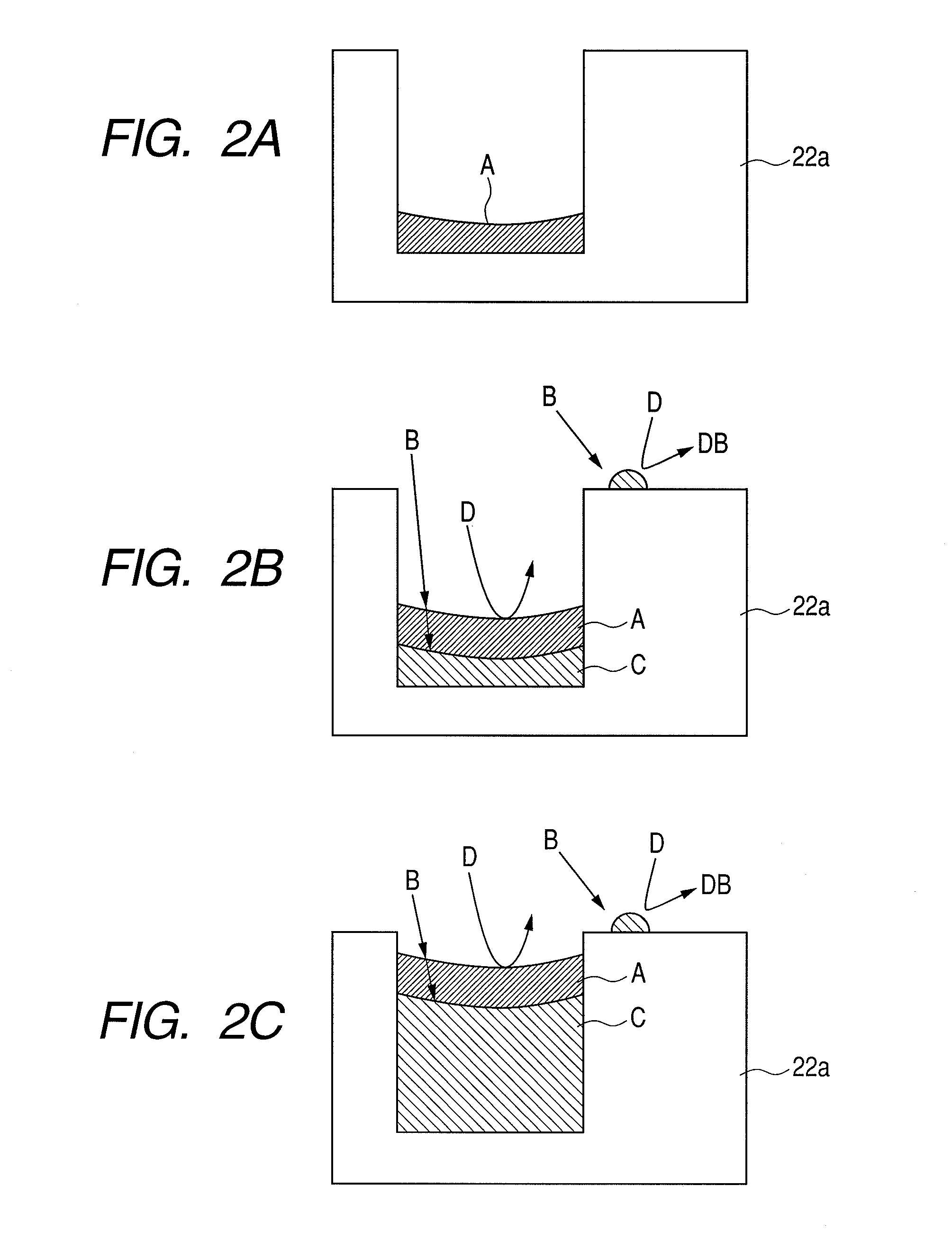Method of burying metal and apparatus of depositing metal in concave portion
a technology of concave portion and burying metal, which is applied in the direction of resistive material coating, chemical vapor deposition coating, metallic material coating process, etc., can solve the problems of increasing production cost, difficulty in burying metal, and failure to conduct cu-burying in the hole, so as to reduce production cost and increase production speed
- Summary
- Abstract
- Description
- Claims
- Application Information
AI Technical Summary
Benefits of technology
Problems solved by technology
Method used
Image
Examples
example 1
[0077]Example 1 will be described below. Example 1 used the wiring-forming apparatus given in FIG. 1. In this Example, the applied substrate 22a was a silicon substrate which was prepared by forming sequentially a silicon nitride film and a silicon oxide film on the surface of the substrate, and by forming vias having a diameter of 0.16 μm as the silicon oxide film, as illustrated in FIG. 3. The aspect ratio of the via was 2.3 as a via-top basis and was 3.0 as a via-bottom basis. The supplied gas was a chlorine (Cl2) gas diluted by argon (Ar). The concentration of the Cl2 gas was set as 3.4% by volume, and the total pressure was adjusted to 1.3 Pa. Furthermore, the target 16a was a copper plate. That is, the pressure of the gas ambient at the time forming metal vapor and wiring, (the total pressure at the time of forming the metal vapor and wiring (the pressure at the time depositing metal in the concave portion), or the total pressure in the chamber 10), was 1.3 Pa.
[0078]Before con...
example 2
[0086]Instead of the above-mentioned conditions, when the supply gas was prepared by diluting chlorine gas (Cl2) by using argon (Ar) to 3.4% by volume, and the total pressure was adjusted to 1.3 Pa, the copper was formed on the surface of the substrate 22a. Except that the substrate temperature was decreased by several degrees Centigrade, other conditions were the same as those in Example 1.
[0087]In this case, as shown in SEM surface observation in FIG. 7 and in SEM cross-section observation in FIG. 8, entire vias made it possible to be buried with copper. Meanwhile, the vias were arranged in a regular grid pattern inclined in 45 degrees. As shown in SEM surface observation in FIG. 7, the copper was buried inside the vias and was overflowed outside the via on the substrate 22a. The measurement of the formed copper by using XRF gave the atomic ratio of chlorine (Cl) relative to copper (Cu) of 0.48, which showed that the chlorine-containing copper was formed.
[0088]As described above, ...
PUM
| Property | Measurement | Unit |
|---|---|---|
| diameter | aaaaa | aaaaa |
| temperature | aaaaa | aaaaa |
| pressure | aaaaa | aaaaa |
Abstract
Description
Claims
Application Information
 Login to View More
Login to View More - R&D
- Intellectual Property
- Life Sciences
- Materials
- Tech Scout
- Unparalleled Data Quality
- Higher Quality Content
- 60% Fewer Hallucinations
Browse by: Latest US Patents, China's latest patents, Technical Efficacy Thesaurus, Application Domain, Technology Topic, Popular Technical Reports.
© 2025 PatSnap. All rights reserved.Legal|Privacy policy|Modern Slavery Act Transparency Statement|Sitemap|About US| Contact US: help@patsnap.com



